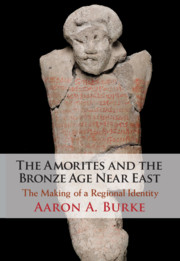Book contents
- The Amorites and the Bronze Age Near East
- The Amorites and the Bronze Age Near East
- Copyright page
- Dedication
- Contents
- Figures
- Tables
- Preface
- Acknowledgments
- Abbreviations
- One Introduction
- Two Communities at the Margins
- Three Beyond Pastoralism
- Four Mercenaries and Merchants
- Five Competition and Emulation
- Six Conclusion
- References
- Index
One - Introduction
Amorites, Their Legacy, and the Study of Identity
Published online by Cambridge University Press: 23 January 2021
- The Amorites and the Bronze Age Near East
- The Amorites and the Bronze Age Near East
- Copyright page
- Dedication
- Contents
- Figures
- Tables
- Preface
- Acknowledgments
- Abbreviations
- One Introduction
- Two Communities at the Margins
- Three Beyond Pastoralism
- Four Mercenaries and Merchants
- Five Competition and Emulation
- Six Conclusion
- References
- Index
Summary
1. Introduction: Amorites, Their Legacy, and the Study of Identity
The legacy of Amorites in the ancient Near East is discussed as well as the various approaches employed in this study for addressing the archaeological, historical, and iconographic evidence. The purpose, scope, and aims of the discussions of discrete historical moments that compose this work are outlined.
- Type
- Chapter
- Information
- The Amorites and the Bronze Age Near EastThe Making of a Regional Identity, pp. 1 - 17Publisher: Cambridge University PressPrint publication year: 2020



